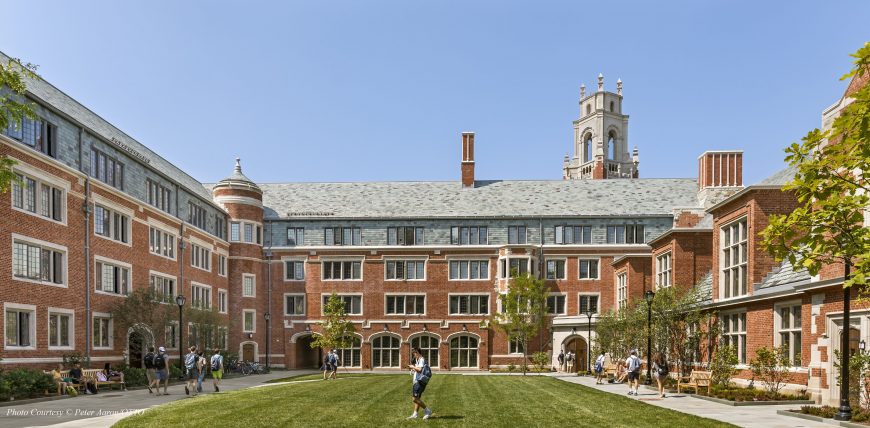Have you ever researched colleges and wondered what the acceptance rate really means? Many students, when applying for undergraduate and graduate programs, use acceptance rates as a valuable resource to better tailor their goals and college wish lists. While it’s commonly known as just a number, understanding how acceptance rates work can significantly help you navigate the college selection process. Our Collegeboxes experts are here to share everything you need to know about acceptance rates to make your college search easier and more informed.
What is an Acceptance Rate?
A college’s acceptance rate, or admission rate, is the percentage of applicants who are admitted to the college in a given school year. It’s calculated by dividing the number of accepted students by the total number of applicants and then multiplying the result by 100. Some colleges have high acceptance rates, typically four-year public institutions, meaning they are less selective. Others have much lower acceptance rates (generally below 10%), indicating that they are highly selective and have rigorous admission standards.
A school’s acceptance rate is a key indicator of its competitiveness and reputation. It helps students develop their application strategies and understand their chances of getting into a particular school. In the United States, the average acceptance rate is approximately 73% for four-year, non-profit colleges, 78% for public colleges, and 70% for private colleges.
What Does the Acceptance Rate Tell You About a College?
Reputation
Acceptance rates reflect a school’s reputation. A low acceptance rate often suggests that the school offers a high-quality educational program, an advantageous location, better campus services, scholarship packages, or even post-graduate job opportunities, which attract more applicants. Most colleges with low acceptance rates, such as Harvard, Yale, and Princeton, are prestigious institutions with highly selective and competitive admissions processes.

Size
A higher acceptance rate may indicate that a school is larger, less selective, and more willing to admit a broader range of applicants. For example, Arizona State University’s acceptance rate in 2023 was around 90%, making it more accessible to a larger pool of students.
Competitiveness
A low acceptance rate means the school admits fewer students than others, making the application process more competitive. When applying to a school with a low acceptance rate, it’s recommended that you make yourself stand out among the many applicants to increase your chance of being admitted.
Factors that Affect the Acceptance Rate

School’s Standards and Internal Processes
All schools base their selection on criteria such as high school GPAs, standardized test scores, recommendation letters, and personal statements. Colleges with higher requirements for test scores, GPAs, or specific test-optional policies tend to have lower acceptance rates, as fewer applicants meet their criteria.
Another factor influencing acceptance rates is the number of available spots for students. Some schools have a fixed range for the number of students they admit each year.
Volume of Applicants
The number of applicants also affects the acceptance rate. The more applicants a school receives, the lower its acceptance rate will be, resulting in fewer students being admitted. For example, a school with twenty thousand applicants each year will have a lower acceptance rate than a school with only a few thousand applicants, assuming both schools are the same size.
How to Find College Acceptance Rates
College Website
It’s important to seek information directly from the school’s website, as it may have up-to-date information. Many schools have admissions pages with information about acceptance rates, application numbers, and other details from the most recently admitted class. You can also check the school’s Common Data Set (CDS) for acceptance rates under the Enrollment or First-Time, First-Year (Freshman) Admission sections.

Other Websites
Third-party websites and data sources like U.S. News & World Report, BestColleges, and others also provide acceptance rate information. While there might be slight variations in the numbers, these differences are generally insignificant.
What to Consider When Researching College Acceptance Rates
College acceptance rates can sometimes be confusing or misleading. As you can see, acceptance rates vary widely and depend on various factors such as the strength of the applicant pool, the number of applicants, the number of openings for first-time freshmen and transfer students, admissions requirements, and the type of college. You can expect these rates to change each year as well.
Admission Process
Also, acceptance rates can be influenced by different admission rounds. Early admission rates and regular admission rates can vary significantly. Additionally, a college’s acceptance rate may depend on your intended major, and this impact can differ by school. For instance, the University of California, Berkeley accepts 53% of art history majors, but only 4% of transfer applicants for computer science and business administration. Purdue University has a 67% overall acceptance rate but only accepts 37% of first-year engineering applicants.
Other Factors
When researching acceptance rates, consider them in context. Acceptance rates alone aren’t a definitive factor in choosing a school. You should also look at the school’s size, the programs they offer, the number of students they admit each year, and the required GPA. Rather than basing your decision solely on the acceptance rate, use it as a helpful resource.
If you’re interested in applying to a school with a lower acceptance rate and are curious whether you’ll meet the admissions requirements, talk with your school’s advisor. They can help you understand what you need, from your GPA and standardized test scores to your involvement in extracurricular activities and the quality of your essays.
Choosing the right college is a crucial decision that requires careful consideration and Collegeboxes is here to make the process smoother for you. As you focus on researching acceptance rates and selecting the best schools to apply to, let us take care of your moving, packing, and storage needs. With Collegeboxes, you can concentrate on achieving your academic goals while we handle the logistics. Learn more about our services and sign up today to make your transition to college life stress-free!
